Sue Cusack, Nettrice Gaskins, Lesley STEAM Learning Lab, Cambridge, MA
Karen Leary, Somerville High School, Somerville, MA
March 3, 2023
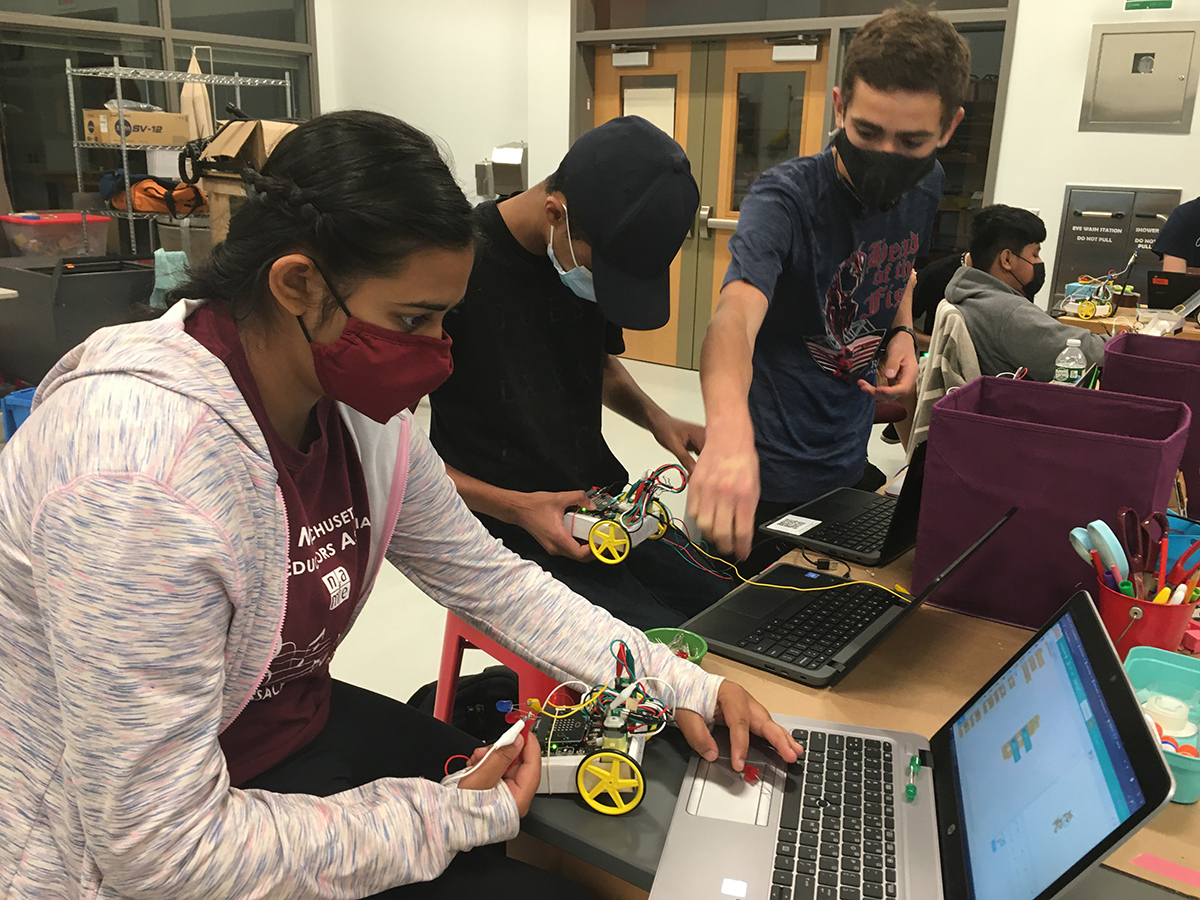
Sixteen Somerville High School (SHS) students from diverse backgrounds came together to explore the combination of art, storytelling, artificial intelligence (A.I.), and robotics. Their teachers worked with Lesley STEAM to weave this content together with relevant STEAM and CTE standards and learning objectives. The final product was a hybrid course that took place in the High School’s new FabLab, as well as online with Lesley University’s College of Art and Design faculty, a comic and graphic novel artist. They earned four Lesley college credits that were matched by 2.5 math and 2.5 art credits from SHS. Many of the skills they learned can be applied to other classes they can take during the school year such as math, language arts, art, and computer science.
Inspired by developments in artificial intelligence such as machine learning and A.I. sensing, the SHS/LSTEAM team facilitated several activities such as learning Scratch programming language, building basic robots, then students gained fine arts and storytelling skills from drawing comics. Class activities culminated in a capstone “artbot” project. The main objectives of the class were for students to:
Students began the class by learning about artists who explore human-machine collaboration and interaction such as Soughwen Chung and Stephanie Dinkins. They learned about Joy Buolamwini, a coder who uses art and research to illuminate the social implications of artificial intelligence.

During the first two weeks, students learned how to use design thinking based on a culturally relevant making model from LSTEAM staff. The model included “design cyphers”, concept mapping, and “collaborative peer reviews.” They learned about the fundamentals of computer programming with Scratch, as well as how to build and program robots to imitate human creative expression. Later, they used an A.I. sensing extension in Scratch to enable their robots to respond and react to human movement.
During the third week, students worked with their peers, teachers and LSTEAM staff to synthesize what they learned in art and storytelling with their A.I. robot builds. In the morning, they took “Comics and the Graphic Novel” online with Barrington Edwards, summer faculty from Lesley University’s College of Art and Design; and in the afternoon, they met at the FabLab to engage in tasks that allowed them to combine clearly and coherently different ideas from visual storytelling with their physical robot prototypes. These activities culminated in student presentations synthesizing their work at the end of Friday class.
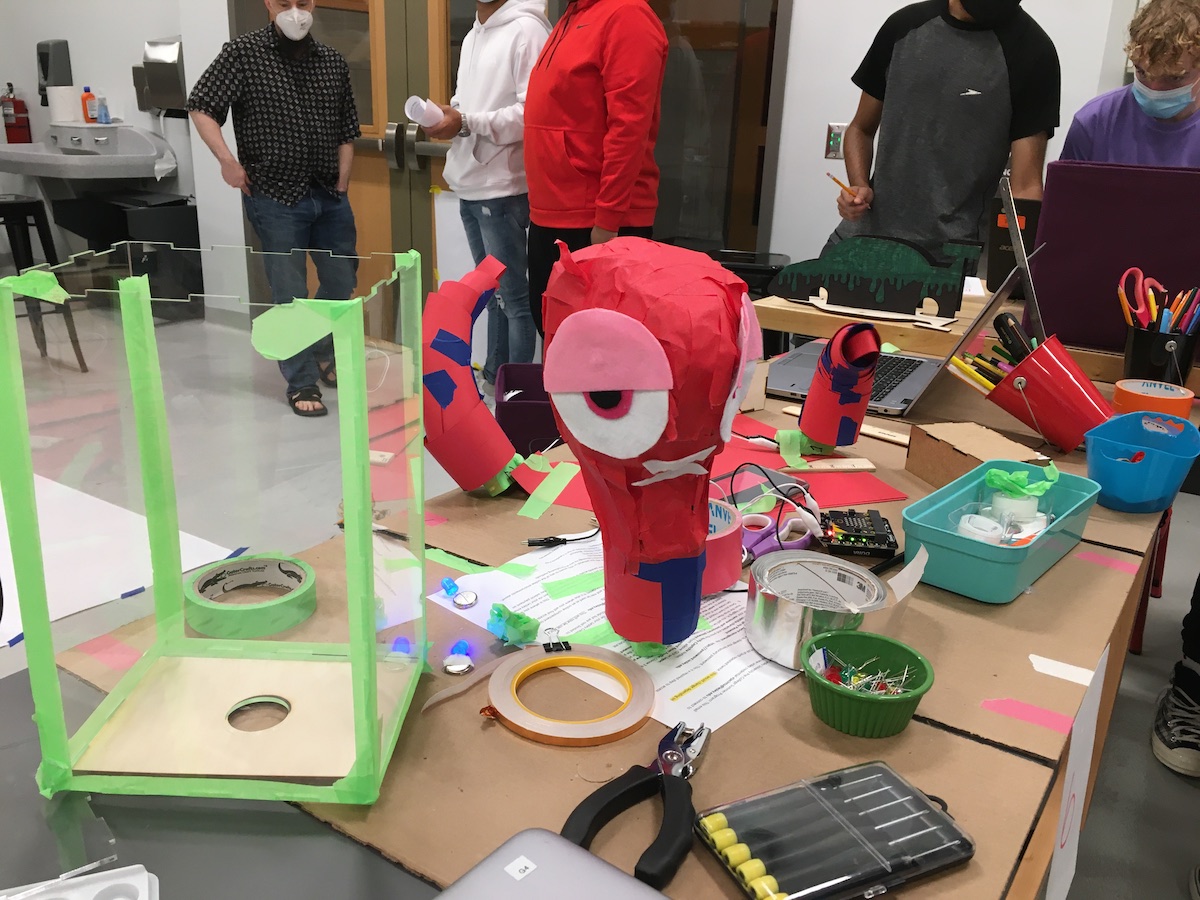
For the last and final week, students worked independently on their capstone projects, with support from the SHS/LSTEAM team. Students participated in collaborative peer reviews and gallery walks to get feedback from their peers, school teachers and administrators, and outside experts. On the last day each individual student or small group of students presented their final projects to the general school community.
Making the Artbots
For this class, students were tasked with designing, programming, and prototyping, and presenting their artbots, which are robots that respond to people and make art. They created a short comic about how to make an artbot and presented them during class. To build the artbot students were given design constraints such as:
Pose estimation is a computer vision technique that predicts and tracks the location of a person or object. This is done by looking at a combination of the pose and the orientation of a given person or object. Students learned how to add code modules and extensions to Scratch that detect human movement using the computer’s in-board (web) camera. This builds on the Face Sensing block that uses machine learning that is trained to see faces.
Examples of the students’ final ‘artbots’ include “Cube”, a robot that is controlled by two mini-computers called BBC Micro:bits; “The Crab” that moves left, right, forward, and backward using servos motors; a “Boatman Painter” bot that actually paints; a “Kraken” bot that draws; a “Ladybug” bot that realizes how beautiful the sunshine is and draws sun symbols on paper; and a Butterfly bot that collaborates with humans to draw colorful pictures. Two students created a skateboarding “Ninja Turtle” that used music as the art form to define its movement. And finally, one student created their version of the “Scratch cat” as a motion-sensing A.I. robot that uses peoples’ body movements to draw.
To learn more, check out the students’ final artbots:
This course was made possible through the support of BiogenSTAR, Somerville High School, Lesley University College of Art and Design, and the City of Somerville.
Kreg Hanning, Sue Cusack & Jacy Edelman
Lesley University
Scratch@MIT Conference 2016
August 4, 2016
Scratch@MIT Conference 2016
August 4, 2016
Sue Cusack, Jacy Edelman, and Kreg Hanning
Lesley University
SXSWedu 2016
March 9, 2016
Over 130 junior kindergarten – 6th grade students from the Summer Compass Program came through the Lesley Makerspace to experience hands on robotics, electronics, and engineering projects.
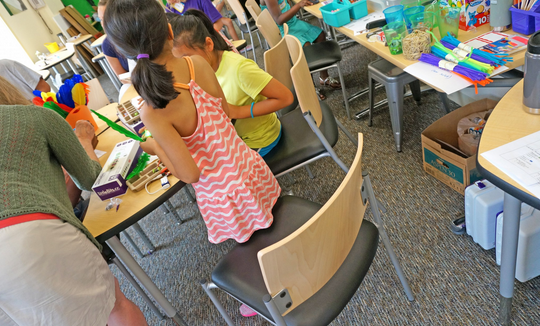

Amanda Wager, Assistant Professor in the Graduate School of Education, was eager to share the makerspace with her Sheltered English Immersion class. The makerspace team developed an evening designed to immerse students in language and literacy through making.
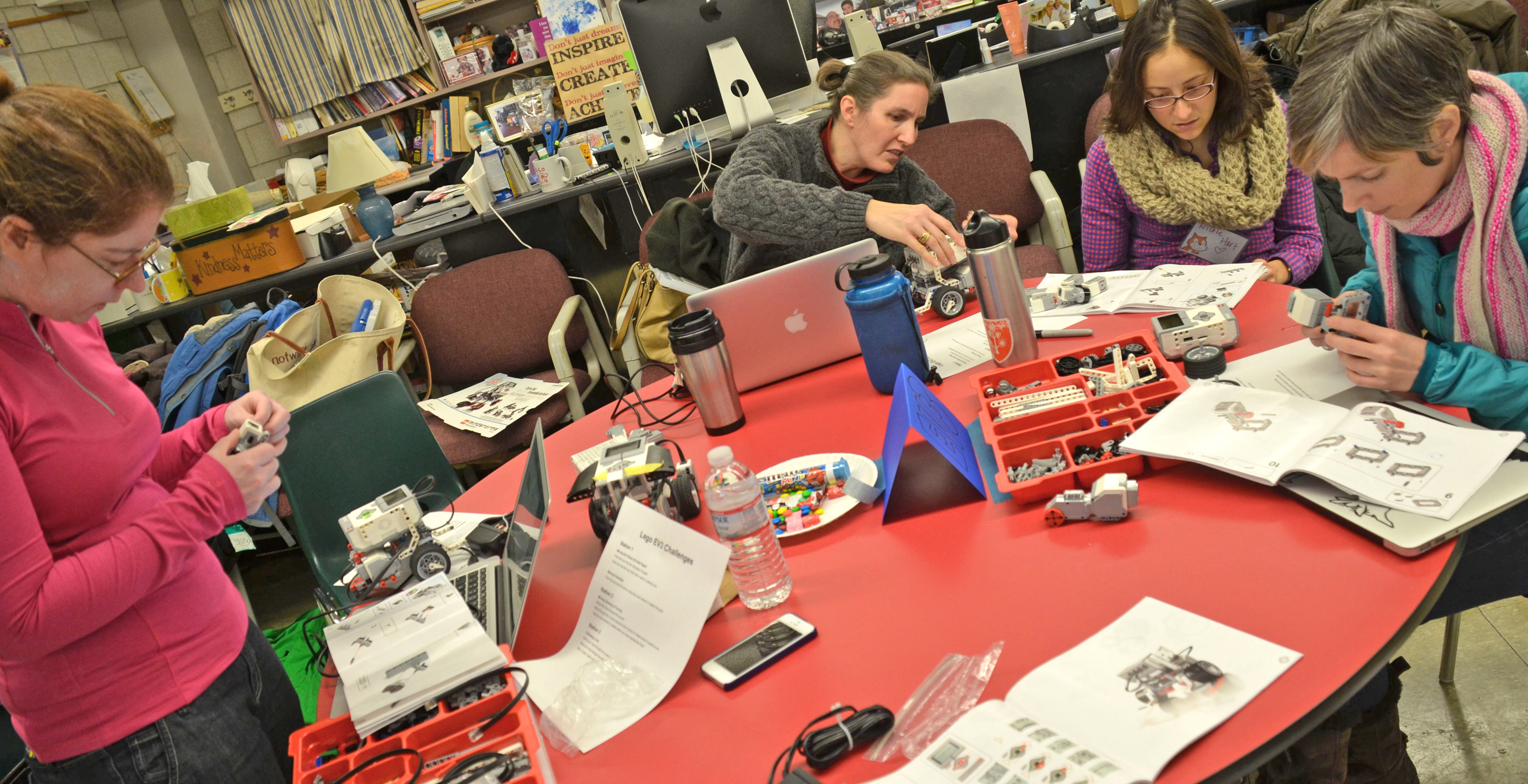
Last Monday, one of Amy Moylan’s first grade parents came into her classroom to share her daughter’s excitement that “her teacher is going to robot school” and that the little girl couldn’t wait to use the robots in her classroom. Ms. Moylan, who teaches at the Amigos School, was one of 20 Cambridge Public School District (CPSD) teachers and specialists taking the “Make It Take It” robotics course facilitated by the Lesley team and CPSD Instructional Technology Specialist guru Ingrid Gustafson. The idea behind the class is that each Cambridge school was offered robotics kits with the intent of bringing robotics and programming into the classrooms. The workshop was taught in the Kennedy-Longfellow School (K-Lo) makerspace over the course of several days.
Above: The 4th grade students became programming mentors, helping to guide Kindergarteners through exploring Scratch Jr.
Students at the Kennedy-Longfellow School didn’t just spent one hour coding for the National Hour of Code Week: they spent 31 hours of collective coding! All grade levels, including preschool and Special Start students up through 5th grade, were invited into the school makerspace during the week to participate in hands-on coding activities. Following our model of student-centered learning, we set up various centers, depending on the age range, and let the students free to explore!
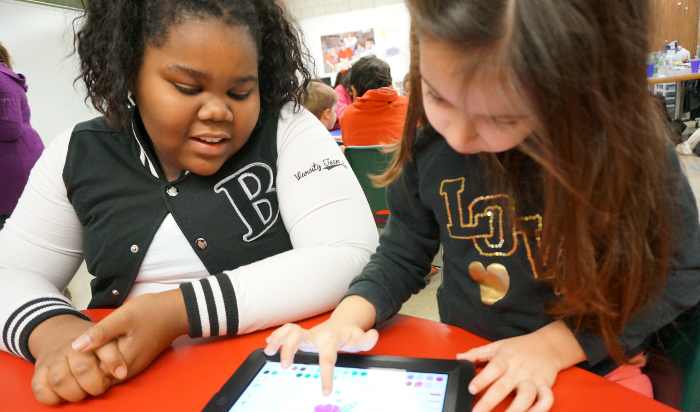 Above: a 5th grade coder mentors a 1st grader using Scratch Jr.
Above: a 5th grade coder mentors a 1st grader using Scratch Jr.
A group of nine Kennedy-Longfellow students spent a weekend in November coding as part of the first ever Boston-based “Girls Who Make Games” workshops at MIT. These students immersed themselves in game design, art, and programming using software called Stencyl.
Not only did they get to network with other local girls who code, they were mentored by local professional developers. We sat down with these students and asked them to share their thoughts on what makes them tick as programmers at K-Lo, and beyond. To view the video, click here.